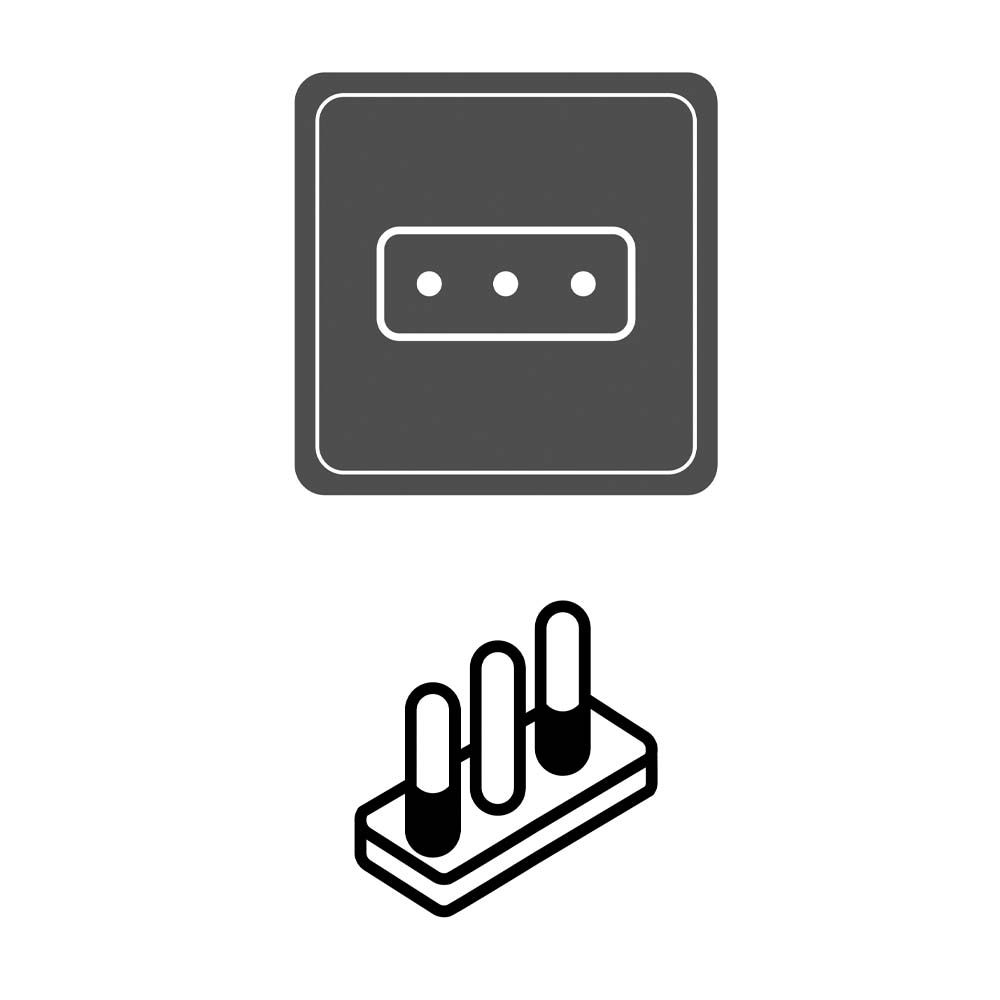Country Snapshot: Electrical Overview
Electric Current
Electricity is supplied in Italy at 230 volts AC, 50 Hertz (Hz).
Electric Plug
Electric plugs in Italy are of three types: “Type C” Europlug CEE 7/16, “Type F” Schuko CEE 7/7, and “Type L” CEI 23-16/VII.
The Type C plug is known as the Europlug and is the most universally-used plug in the world, largely because it can be used with a number of different sockets. It is used in most continental European countries, some Middle Eastern countries, and many African, South American, and Asian countries. It is a narrow-headed two-wire plug with two round pins spaced horizontally from each other, with no grounding pin. See the illustration at right. Type C plugs are generally limited to devices and appliances that require 2.5 amps or less.
The Type F plug, known as a Schuko plug, is a round-headed plug with two round pins spaced horizontally from each other and two flat contact areas on its top and bottom sides to accept a wall socket’s grounding clips. Most modern Schuko plugs also have a circular hole above the pins in order to be compatible with Type E sockets. This makes it compatible with Type F wall sockets that have grounding clips at the top and bottom as well as Type E sockets with a central grounding plug. Schuko plugs are becoming increasingly common and are most often used in continental European countries, many Middle Eastern and African countries, and some Asian countries.
The Type L plug is used almost exclusively in Italy and Chile, but can also be found randomly throughout certain North African countries. It is a long-headed plug with three round pins spaced equally from each other in a straight line.
Electric Plug Adapter
If your electronic device or appliance does not use a Type C, Type F, or Type L plug you may need an electric plug adapter. Plug adapters are available both online and in stores from travel companies, drugstores, and big-box stores. Note that an adapter allows a foreign device to plug into an Italian outlet, but it does not change the electric voltage coming out of the Italian outlet.
Using Home-country Appliances and Devices in Italy
The feasibility of using home-country electrical appliances and electronic devices in Italy depends on a number of factors, including the type of appliance or device and the voltage on which it operates.
Electrical Appliances
Electrical appliances are high-wattage items that use a mechanical motor or heating element (e.g., hair dryers, curling irons). If the appliance operates between 220–240 volts, 50 Hz, it may still require a plug adapter, but it will work in Italy without a voltage converter.
If the appliance operates between 110–120 volts, 60 Hz (as with appliances from most North and South American countries), it may require both an adapter and a voltage converter/transformer. The converter/transformer adjusts the power coming from the 230V outlet down so that the 120V appliance is not overloaded. You can purchase dual-voltage hair dryers and curling irons that work with multiple electric currents. See “Dual- or Multi-Voltage Devices” below.
Electronic Devices
Electronic devices are low-wattage items that use chips, circuits, or electronic motors (e.g., computers, printers, cell phones, and cameras). As with appliances, these devices may require use of a plug adapter. However, most of these devices run on dual- or multi-voltage chargers, which means they can operate using multiple electric currents. See “Dual- or Multi-Voltage Devices” below. If an electronic device is not dual- or multi-voltage and operates between 110–120 volts, it will require a transformer to adjust the power coming from a 220–240V outlet.
Dual- or Multi-Voltage Devices
Many electronic devices like cell phones, cameras, and computers have multi- or dual-voltage chargers that can operate on 100V current, 240V current, or something in between. Whether it is or dual- or multi-voltage will be indicated on the device’s power label. Dual-voltage is symbolized by a slash between the numbers, 120V/240V, meaning it will operate on either of the two specific voltages. Multi-voltage is symbolized by a dash between the numbers, 100V–240V, meaning it will operate on any voltage between 100V and 240V.
If an electronic device is either dual- or multi-voltage, a voltage converter or transformer is not necessary (though a plug adaptor may still be).
Converters
Converters are used only for high-wattage electrical appliances with mechanical motors or heating elements (e.g., hair dryers and curling irons). Electrical appliances that require short-term or sporadic usage generally use converters.
Transformers
Transformers are used for both high-wattage electrical appliances as well as low-wattage electronic devices that use electronic chips or circuits, such as computers and printers. Transformers are typically used for items requiring one or more hours of continual usage.
Copyright © 1993—2024 World Trade Press. All rights reserved.

 Italy
Italy 

